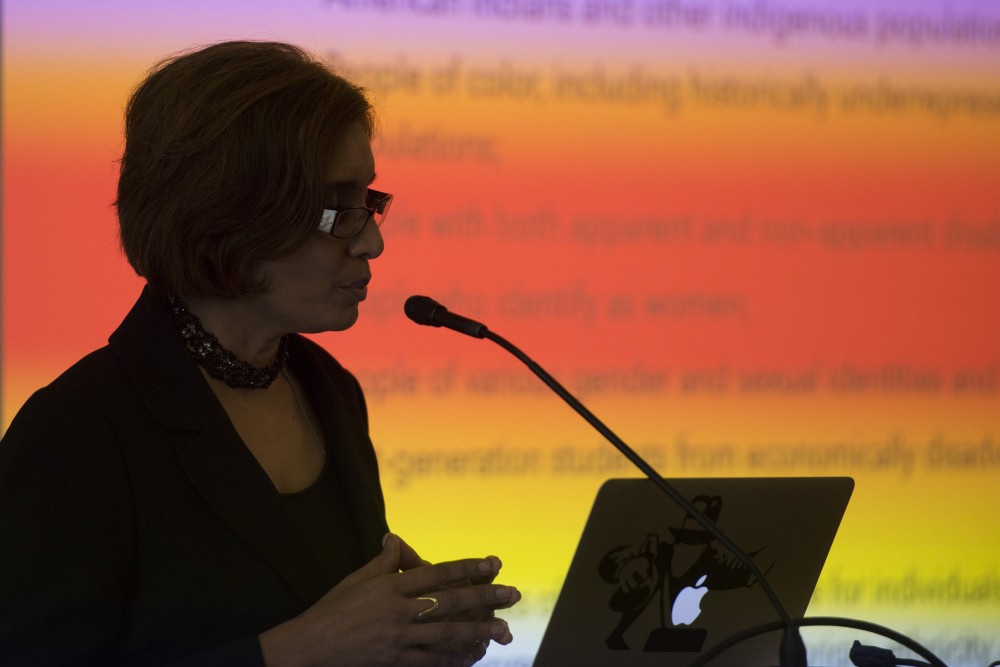A conference at the University of Minnesota Friday looked at ways to include marginalized communities in the research process — an issue that’s increasingly important in researcher’s work.
The Diversity Data Deep Dive brought together over 160 staff and students from each of the University’s campuses. The full-day series of lectures and workshops focused on collaborating with diverse communities in the research process and making studies more accessible to people from marginalized backgrounds.
This is the third time the conference has been held, but this year the event brought together all University system campuses — Twin Cities, Morris, Crookston, Duluth and Rochester — for the first time.
The issues researchers study are often determined by people in the academic community, not by low-income and diverse demographics, said Teddie Potter, the director of inclusivity and diversity at the School of Nursing, who led part of the conference. This makes underrepresented communities feel disconnected from the research process, she said, and leaves many important issues facing disadvantaged Americans unexplored.
“People with lived experience have an expertise that may be different than … someone [who] has gone through levels of [academia],” Potter said. “In a faculty role, I can only ask the questions that have popped up in my viewpoint.”
When researchers collaborate with diverse communities, they should be careful to respect their unique needs, said Virajita Singh, assistant vice provost at the Office for Equity and Diversity, who moderated part of the conference.

University research in North Minneapolis — which is predominantly black and African American — has not always been received positively by members of the community, who may question the University’s motives, she said.
In order to reduce the gap between academics and marginalized communities, it’s important for researchers to build relationships with community members over a long period of time instead of quickly leaving, Singh said.
“When you actually come and build a relationship with the community, then you [won’t] do something that you wouldn’t do to your own community,” she said.
In addition to collaborating with marginalized communities, it is also vital for researchers to present the data they gather in a way that is accessible to everyone, Singh said. This can include pie charts, bar graphs, images, narratives describing the data with words and hosting events to discuss the research.
Another way to make research more accessible to diverse communities is through qualitative studies, said Ariana Yang, a doctoral student who represented the University’s Asian Pacific American Resource Center at the conference.
Yang said that more in-depth data studies can uncover issues affecting different demographics within larger ethnic groups that might not be visible otherwise.
“[Data] can sometimes disguise … the wide disparities that exist between ethnic communities,” she said. “Data in that regard has a very real impact on how our communities are seen.”

















